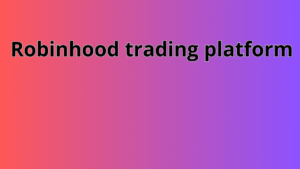Trading in the USA involves the buying and selling of financial instruments such as stocks, bonds, commodities, currencies, and other securities. The United States is home to some of the largest and most influential financial markets in the world, including the New York Stock Exchange (NYSE) and the Nasdaq.
Key Aspects of Trading in the USA:
- Types of Markets
- Stock Market: Includes trading shares of publicly listed companies.
- Forex Market: Trading in currency pairs like USD/EUR or USD/JPY.
- Options Market: Buying and selling options contracts.
- Futures Market: Trading agreements to buy or sell assets at a future date.
- Cryptocurrency: Trading digital assets like Bitcoin and Ethereum.
- Regulations
Trading in the USA is regulated by organizations like the U.S. Securities and Exchange Commission (SEC), the Commodity Futures Trading Commission (CFTC), and the Financial Industry Regulatory Authority (FINRA). These organizations ensure transparency and protect investors. - Brokerage Accounts
To trade, you need to open a brokerage account. Popular brokers in the U.S. include Charles Schwab, TD Ameritrade, Robinhood, and Fidelity. Many brokers now offer commission-free trading for stocks and ETFs. - Trading Hours
- Regular trading hours for most U.S. markets are 9:30 AM to 4:00 PM Eastern Time (ET), Monday through Friday.
- Pre-market and after-hours trading are also available but come with additional risks.
4. Tax Implications
Profits from trading are subject to capital gains taxes. It’s important to understand short-term and long-term capital gains tax rates in the U.S.
- Education and Tools
5.Trading Platforms
Platforms offer tools for analysis, market research, and order execution.
Popular platforms include Robinhood, TD Ameritrade, E*TRADE, Fidelity, and Charles Schwab.
- Many platforms provide educational resources and tools for market analysis.
- Keeping up with financial news, market trends, and economic indicators is crucial for successful trading.
6. Risk Management
- Diversify your portfolio to minimize risk.
- Use stop-loss orders to protect against significant losses.
- Never invest more than you can afford to lose.
Trading in the U.S. offers numerous opportunities, but it also comes with risks. It’s essential to conduct thorough research, stay informed, and develop a solid trading strategy before entering the markets.
7. Legal Requirements
- Traders must comply with all federal and state-level regulations.
- Pattern Day Trader (PDT) rules require a minimum account balance of $25,000 for frequent day trading.
8. Economic Factors
- Trading in the USA is influenced by Federal Reserve policies, economic data releases, geopolitical events, and corporate earnings reports.
Always ensure you understand the risks and consult with financial advisors if needed before engaging in trading.



